By Christian Price[quote_box_right]With materials and labor costs rising as much as 40 percent in the past year alone, this carefully choreographed dance between land developers, building contractors and business owners is getting trickier and trickier.[/quote_box_right]
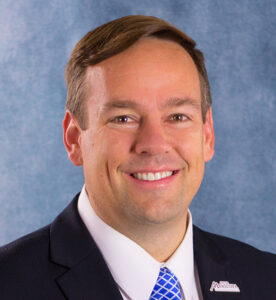
As many of you know, last month, a contingent from Maricopa, which included myself and City staff, participated in the International Conference of Shopping Centers (ICSC) in Las Vegas.
This particular show is a veritable “who’s who” of developers, financiers, site selectors, place makers, retailers, hoteliers and so much more. More than 35,000 attendees congregate in one place looking to make connections, build relationships, get to know new areas and land sites and start the lengthy process of making deals to potentially pull new “stuff” out of the ground.
When it comes to this type of economic development, cities like Maricopa are often prevented from revealing information to the public until the business itself gives us permission. And although we may be bursting with pride when a business expresses an interest in our city, we must abide by their wishes before making any big announcements.
But something we can share is how the business and development community look at expanding their product to a market, specifically one like Maricopa.
Each market or land site within a city, county or state has a long list of challenges to overcome, long before development can ever be considered, and the way a developer or business perceives a given market has to fit into their “proprietary formula for success” that is specific to their industry, market conditions, economic and consumer trends, political certainty, financial opportunity, availability to capital and so on.
Almost all businesses have and use these formulas to calculate the amount of risk they are willing to make when considering a multi-million-dollar investment into the market. Some company formulas, in my opinion, are more open to trying something new, non-conforming or taking new risks, but many are not. And almost every company swears their formula is “tried and true” based on their years of operations as a business. Trying to get them to deviate, even just a little bit, from these calculated formulas of success is almost impossible. And of course, for each company, each type of business, every different brand within that company or industry type, they are all different!
Whether we agree with them on how Maricopa fits into their formulas or not, we understand that they do change and evolve over time for a variety of reasons — which, in and of itself, is a reason to never give up trying to meet with them, tell them our story, expound on our virtues and persuade them on the merits of a new location for their enterprise here within the borders of our fair city. But the reality is, there are real barriers in locating to any market, even one like Maricopa.
Economies change, CEOs and boards of directors change. Risk tolerances and policies change. Markets change. Progress with “shovel-ready sites” changes.
Site challenges change with infrastructure improvements and other growth-related issues. Population and rooftops matter immensely to these folks. And the perception of what other businesses have done recently or the growth or successes of other businesses in the area may all come into play when decisions are being made.
Thus, as we continue to meet and speak with a variety of businesses, many of which you have shared with me on Facebook that you’d like to see come to Maricopa, and even more that you haven’t, we are literally wading our way through and trying to address these various challenges that are made evident from our very first encounter.
Sometimes a business is simply looking for “the easy sure thing” when it comes to development, and who can blame them? I would do the very same thing. But looking for that easy-to-develop, with-no-challenges site is a little like looking for a unicorn in today’s marketplace. Of course, we all know a business can choose to move heaven and earth if they really want to be located in a given market, but again most need shepherding and lots of encouragement, stats, data, hand-holding and reminders to the decision-makers that we want them here in Maricopa.
We are a young (16-years-old) city. We are not an already-built and established city. We rely on our partners and developers whom we have been fostering relationships with for years that understand the market and are interested in working with us to get new businesses into their soon-to-be-developed buildings.
With materials and labor costs rising as much as 40 percent in the past year alone, this carefully choreographed dance between land developers, building contractors and business owners is getting trickier and trickier.
During our time at ICSC we had a very direct discussion with one of our partners, a developer who is actively working with us to attract new businesses and pull buildings and businesses out of the ground that our community has expressed interest in. We expressed our community’s wants and desires; he is willing to work with us, but explained that getting to where we want to be is a process. That we have to build slowly and deliberately, that each new business allows us to attract other businesses. Such is the life cycle of a growing city.
When a business locates to a new area and is successful, it creates development momentum. Their success also sends a ripple effect through the system that the development community takes note of. This drives their interest in a city to further investigate and ultimately participate in the marketplace.
For example, many of our residents have expressed a desire to have a sit-down restaurant or a “nice steak house.” But to get there you must first start with a fast casual restaurant. Once that restaurant is here and doing well, they expand. And others take notice and consider locating here as well. Which, in turn, prompts other restaurants until eventually the “nice steak house” in Maricopa is a reality.
While there are always exceptions to the above mentioned rules, generally speaking, that is the standard life cycle of a city and how businesses, restaurants, retailers and others make their decisions.
We are very hopeful that this next phase of development for Maricopa will see some of these new businesses that we are all looking for. Our city staff and others are working alongside the developers and the owners of the properties on this vision for our city.
I don’t share this with you as an excuse or to push off our goals of growing our economy and our quality of life here within the city. (If that were the case I certainly wouldn’t have walked over 30+ miles in dress shoes to talk to all these folks!) But rather to have you walk a mile in those shoes, understand the process and the conversations that we’ve been having that convey to the business decision-makers what our community wants.
There are bright and exciting days ahead for this marvelous city. But the process in which economic development occurs, new buildings are built, new stores and businesses open, is not one that happens overnight and it doesn’t typically happen without a little assistance and guidance. With so many moving parts that must align perfectly in order for things to come out of the ground, development can certainly be challenging, but definitely not impossible.
And in my book, the City of Maricopa is most definitely worth the effort.
Christian Price is the mayor of Maricopa.


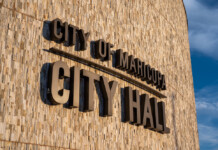
![Elena Trails releases home renderings An image of one of 56 elevation renderings submitted to Maricopa's planning department for the Elena Trails subdivison. The developer plans to construct 14 different floor plans, with four elevation styles per plan. [City of Maricopa]](https://www.inmaricopa.com/wp-content/uploads/2024/04/city-041724-elena-trails-rendering-218x150.jpg)
![Affordable apartments planned near ‘Restaurant Row’ A blue square highlights the area of the proposed affordable housing development and "Restaurant Row" sitting south of city hall and the Maricopa Police Department. Preliminary architectural drawings were not yet available. [City of Maricopa]](https://www.inmaricopa.com/wp-content/uploads/2024/04/041724-affordable-housing-project-restaurant-row-218x150.jpg)
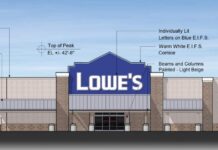
![City looks to lower property taxes again City Manager Ben Bitter speaks during a Chamber of Commerce event at Global Water Resources on April 11, 2024. Bitter discussed the current state of economic development in Maricopa, as well as hinting at lowering property tax rates again. [Monica D. Spencer]](https://www.inmaricopa.com/wp-content/uploads/2024/04/spencer-041124-ben-bitter-chamber-property-taxes-web-218x150.jpg)

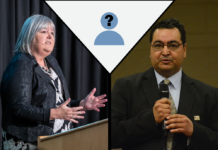
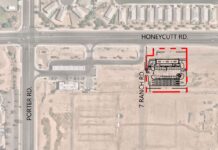



![Alleged car thief released without charges Phoenix police stop a stolen vehicle on April 20, 2024. [Facebook]](https://www.inmaricopa.com/wp-content/uploads/2024/04/IMG_5040-218x150.jpg)



